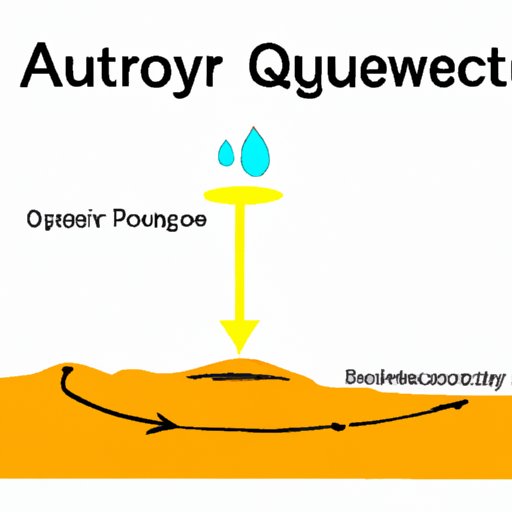Introduction
Aquifers are an essential aspect of our planet’s water cycle and provide a significant portion of the world’s freshwater. Understanding how aquifers work is crucial to ensuring the sustainable management of our water resources. In this article, we’ll explore the basics of aquifers, including how they work and their importance in our daily lives. Whether you’re a student, professional, or just someone interested in learning more about the earth’s natural systems, this article will provide you with valuable insights into the science of aquifers.
Uncovering the Mystery of Aquifers: A Beginner’s Guide to How They Work
Aquifers are underground layers of soil and rocks that are saturated with water. This water, also known as groundwater, is stored within the spaces between soil particles or in the cracks within rocks. There are three types of aquifers: unconfined, confined, and artesian. Unconfined aquifers are located beneath the soil and are easily accessible, while confined aquifers are located below impervious rock layers. Artesian aquifers occur when a confined aquifer slopes upward and is then exposed to the surface, creating pressure that causes the water to flow out.
To understand how water gets into an aquifer, it’s essential to examine the concept of recharge. Recharge occurs when water from precipitation or surface water infiltrates the ground and moves down through the soil and rock layers. This water eventually reaches the water table, which is the top layer of the saturated zone in an aquifer.
Once water reaches an aquifer, it is stored in the soil and rock pore spaces or within the fractures of rocks. This process is known as saturation, and the water stored within these spaces is the groundwater that makes up an aquifer.
From Rainfall to Well Water: The Journey of Water through an Aquifer
The water cycle provides the foundation for how aquifers work. Rainfall, for example, is a primary source of recharge for most aquifers. When rain falls to the earth’s surface, it soaks into the ground, eventually making its way to the water table. From there, it flows through the aquifer until it reaches an area where the groundwater can be accessed via a well or natural spring.
The journey of water through an aquifer can vary depending on the type of aquifer and the geological features in the surrounding area. Water can flow quickly or, in some cases, take thousands of years to travel through an aquifer fully. Nevertheless, the process is critical in ensuring we have a reliable and clean source of water.
The Science Behind Aquifers: Understanding the Role of Porosity and Permeability
Two essential properties affecting how an aquifer works are porosity and permeability. Porosity refers to the amount of space between particles in soil or rocks, while permeability describes how easily water can move through them. An aquifer with high porosity and permeability can store and transmit water quickly, making it more productive. Conversely, an aquifer with low porosity and permeability can store water but not transmit it effectively.
Understandably, knowing the porosity and permeability of an aquifer is crucial in assessing their sustainability and useful lifespan. Aquifers with high porosity and permeability tend to be more productive, but careful monitoring and management are necessary to ensure that they don’t become depleted.
Exploring the Importance of Aquifers in Our Daily Lives
Aquifers play a critical role in providing us with freshwater for our daily lives. From drinking water to irrigation for agriculture, and industrial use, groundwater is a vital resource for many sectors of society. In many cases, groundwater is preferred to surface water, as it is less susceptible to contamination and purification.
Depletion of aquifers can have significant impacts on communities and ecosystems worldwide. In recent years, we have seen declines in the water levels of some of the world’s most productive aquifers, leading to groundwater shortages and severe societal consequences. As such, the conservation and proper management of aquifers are critical in ensuring that we have access to clean and safe water.
Sustaining Our Water Supply: How Proper Management of Aquifers is Key
Aquifer depletion and contamination are major concerns facing many communities worldwide. The key to maintaining sustainable water supplies from aquifers is proper management. Overuse, pollution, and other factors can deplete or contaminate an aquifer, making it unusable in the long term.
Sustainable practices such as groundwater recharge, regulating withdrawals, and monitoring water quality are essential to protecting aquifers and the resources they provide. Some cities and regions have implemented successful management programs that have extended the life of their aquifers and ensured they remain productive for future generations.
Conclusion
Understanding the science behind how an aquifer works is essential in safeguarding our most valuable resource: water. From their role in the water cycle to their critical importance in our daily lives, aquifers are a valuable and necessary aspect of our world. By managing and protecting these critical resources, we can ensure a sustainable future for ourselves and the planet.
